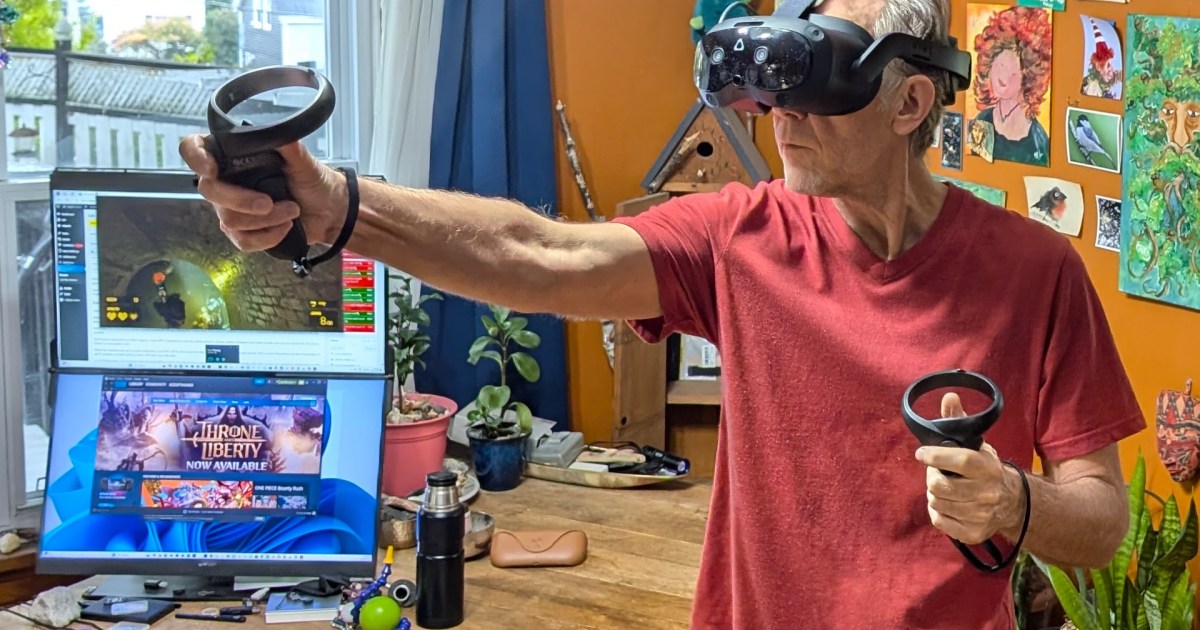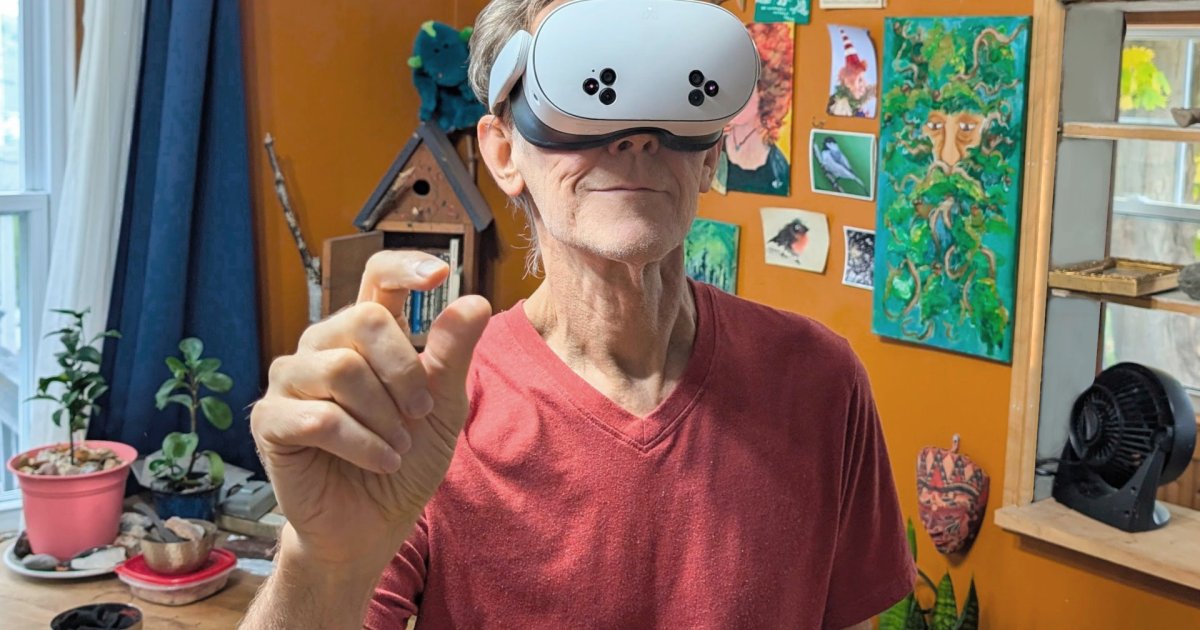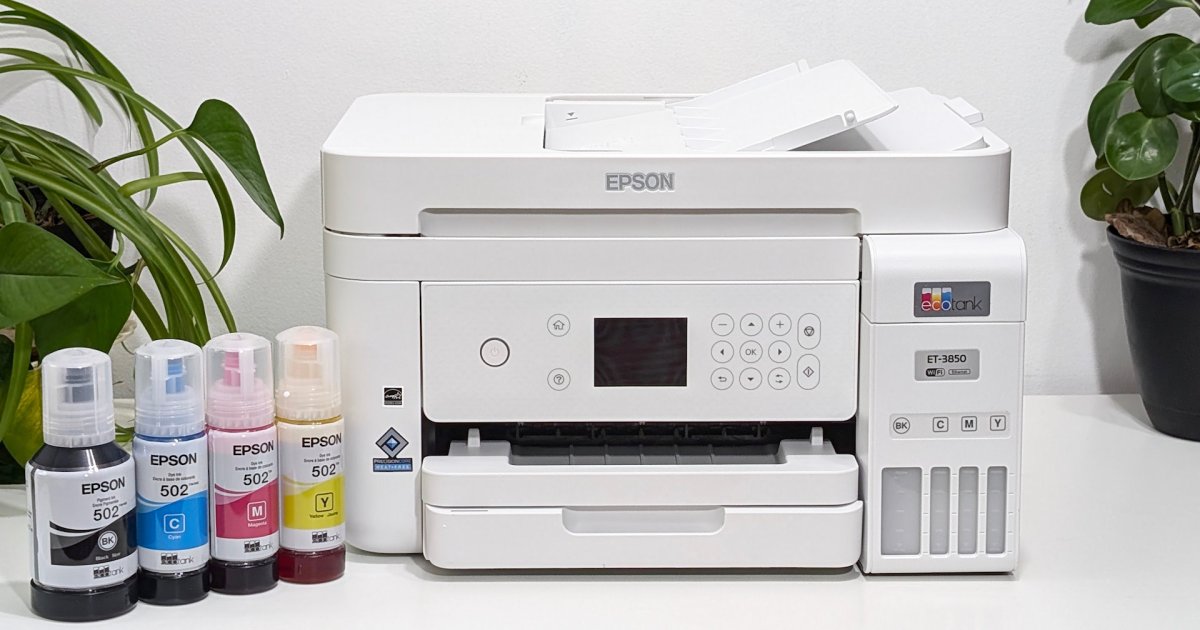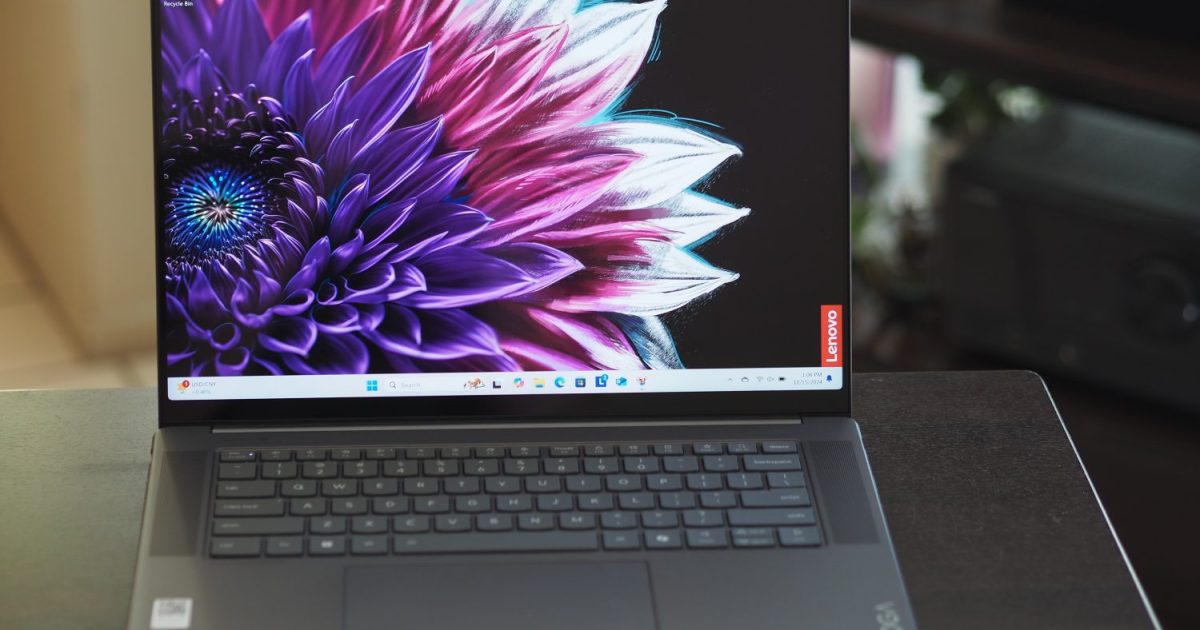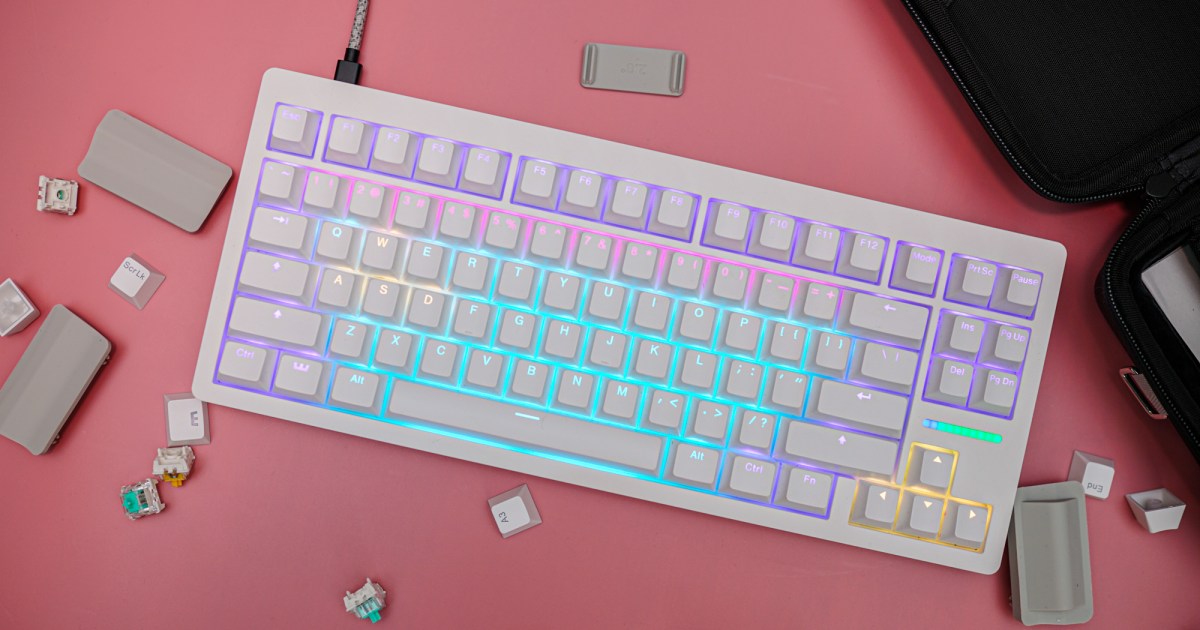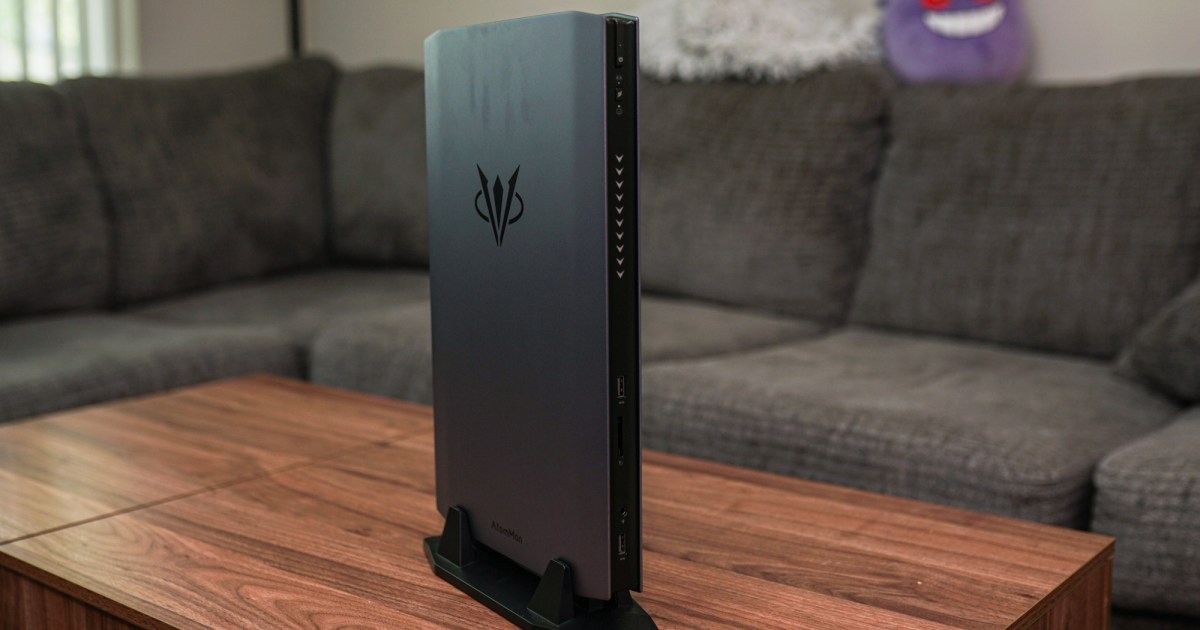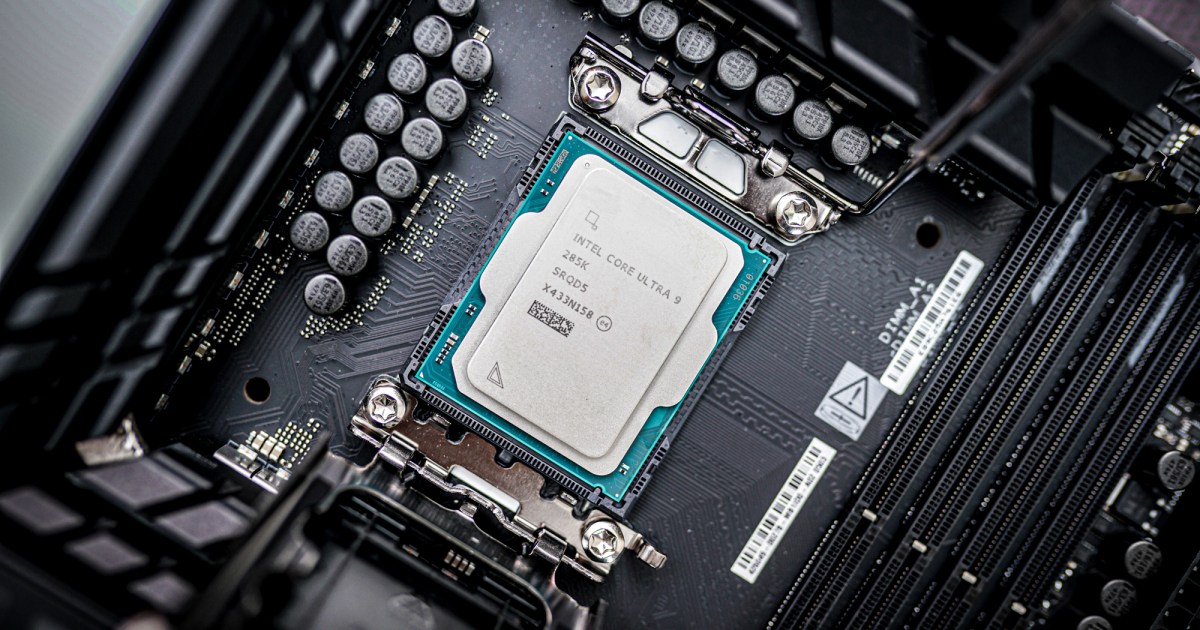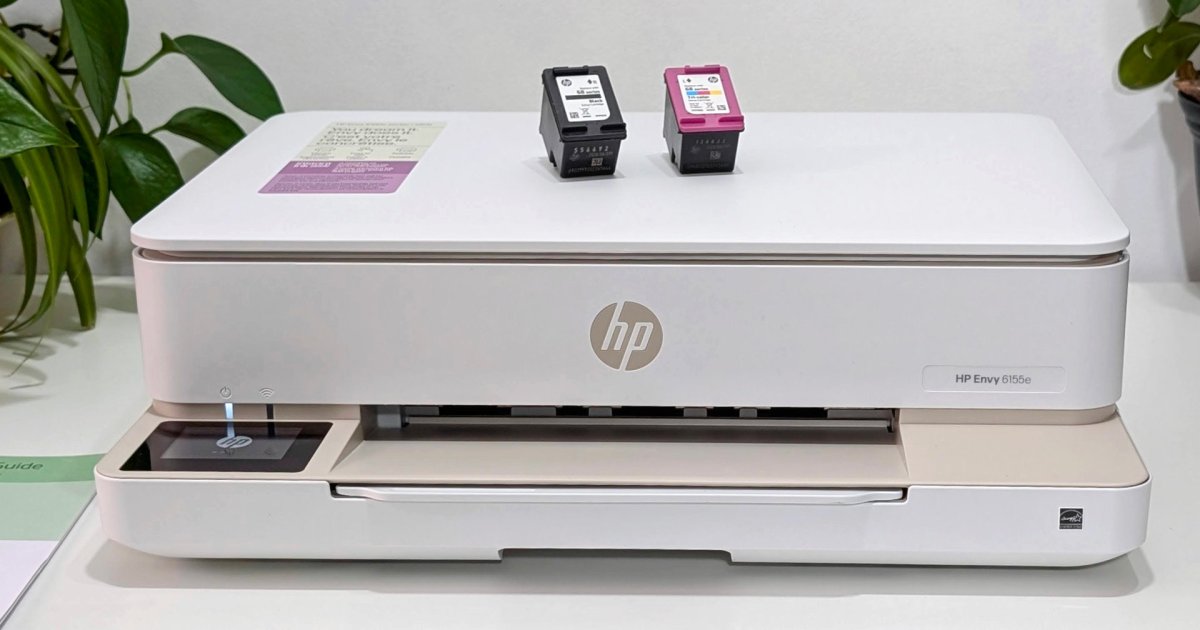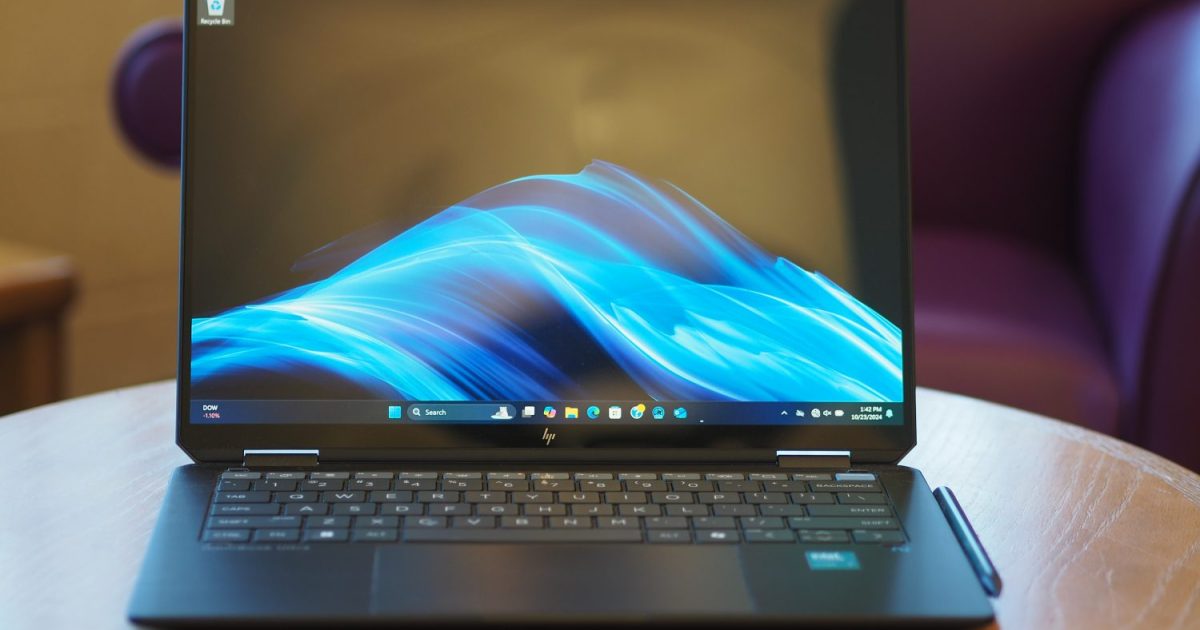The HTC Vive Focus Vision merges the best of the Vive XR Elite, Focus 3, and Pro 2 into a new VR headset offering visually lossless PCVR and standalone mixed reality gaming. This review dives into the strengths and weaknesses of this intriguing device, comparing it to other HTC models and top VR headsets to assess its suitability for gaming, work, and casual use. Despite its tethered connection, the Vive Focus Vision stands out.
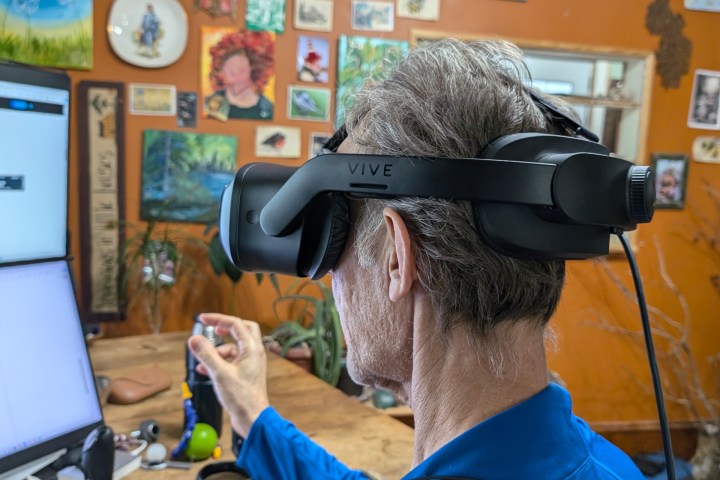 Someone using a Vive headset with their fingers pinching.Image: Experiencing the Vive Focus Vision. (Tracey Truly / MaagX)
Someone using a Vive headset with their fingers pinching.Image: Experiencing the Vive Focus Vision. (Tracey Truly / MaagX)
Lossless PCVR Performance
While standalone VR headsets like the Meta Quest 3 and Vive XR Elite offer wireless PCVR via streaming, a direct wired connection provides superior latency and visual clarity. The Vive Focus Vision delivers visually lossless PCVR through a DisplayPort connection, minimizing compression artifacts and maintaining texture detail.
A DisplayPort to USB-C adapter is required. The HTC DisplayPort Mode Kit, which includes a charger, various adapters, and cables, ensures seamless connection to your graphics card.
 Working on three virtual screens with the Vive Focus Vision.Image: Enhanced productivity with three large virtual screens. (Tracey Truly / MaagX)
Working on three virtual screens with the Vive Focus Vision.Image: Enhanced productivity with three large virtual screens. (Tracey Truly / MaagX)
With a per-eye resolution of 2448×2448 pixels, the Vive Focus Vision demands a powerful GPU capable of outputting twice that resolution at 90-120 fps. This exceeds the requirements of a 4K monitor, so a robust gaming PC with a high-end graphics card is essential.
In PCVR mode, the computer handles processing, with the Vive Focus Vision acting as a display. Performance is excellent, with crisp visuals suitable for productivity and gaming. Testing with an Nvidia RTX 4070 revealed no compression artifacts or lag. VR games, including Half-Life: Alyx, appeared sharp and clear.
However, the use of Fresnel lenses introduces “god rays,” visible rings of light in high-contrast scenes, a drawback compared to newer pancake lens technology.
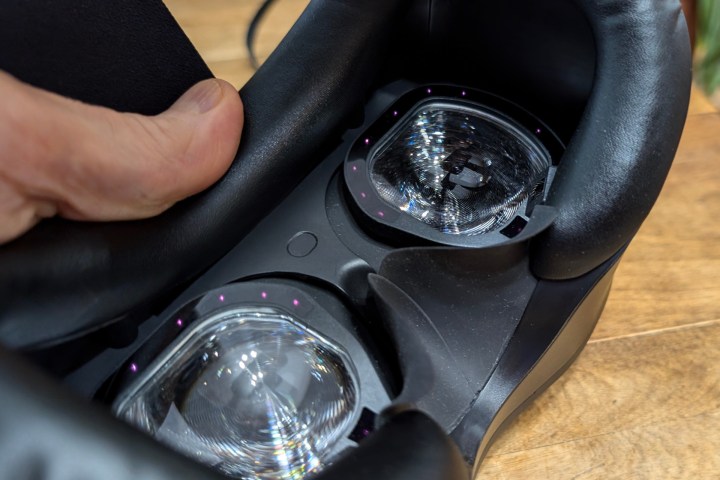 Close-up of the Vive Focus Vision headset.Image: Advanced eye-tracking cameras combined with Fresnel lenses. (Alan Truly / MaagX)
Close-up of the Vive Focus Vision headset.Image: Advanced eye-tracking cameras combined with Fresnel lenses. (Alan Truly / MaagX)
For productivity, Vive Desk provides three large, flawless virtual screens. This VR app connects to Vive Hub on the PC, allowing screen resizing and placement.
Hand-tracking and gaze input are supported, though not as refined as the Apple Vision Pro’s system. While potentially useful, the lens ridges can be distracting when looking off-center, hindering gaze input effectiveness. A keyboard and mouse remain optimal for work tasks, with Vive Desk enabling seamless window management between virtual screens. Wireless connection to Vive Desk is possible using the headset’s internal battery. Alternatively, Virtual Desktop or Immersed can be used for remote PC connection.
Standalone VR Capabilities
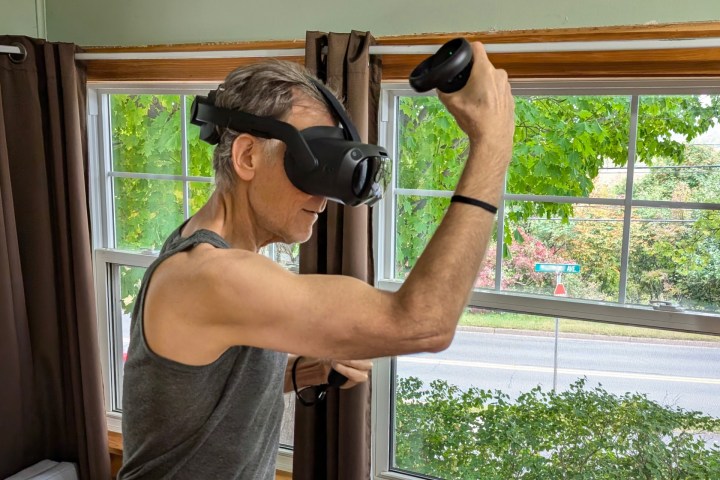 The HTC Vive Focus Vision in standalone mode.Image: Standalone mode ideal for workouts and mixed reality gaming. (Tracey Truly / MaagX)
The HTC Vive Focus Vision in standalone mode.Image: Standalone mode ideal for workouts and mixed reality gaming. (Tracey Truly / MaagX)
While optimized for PC use, the Vive Focus Vision functions as a standalone headset, similar to the Vive XR Elite and Focus 3. Untethered gaming and workouts are possible, with access to the Viveport store and compatibility with Vive XR Elite games. Titles like Figmin XR, Zombieland, and Les Mills BodyCombat function seamlessly.
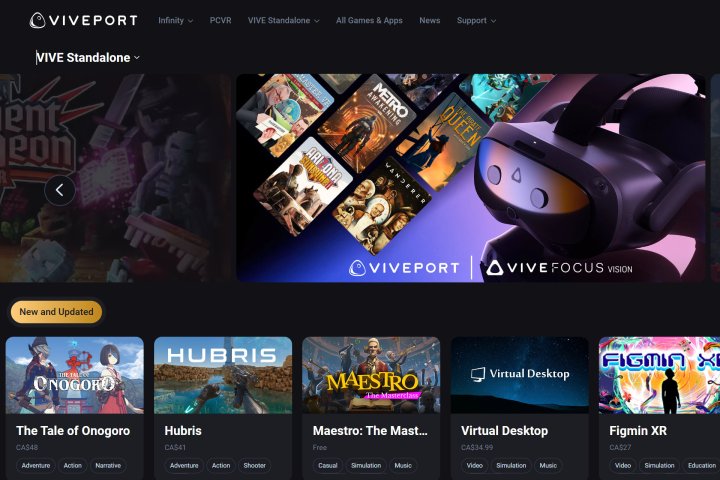 Playing Viveport games on the Vive Focus Vision.Image: Viveport compatibility on the Vive Focus Vision. (HTC)
Playing Viveport games on the Vive Focus Vision.Image: Viveport compatibility on the Vive Focus Vision. (HTC)
With 128GB of internal storage, expandable via microSD card up to 2TB, storage limitations are minimal. The mixed reality view, utilizing dual 16MP passthrough cameras, surpasses the Vive XR Elite’s, offering a more accurate representation of reality.
While eye-tracking support in standalone games is limited, foveated rendering is possible, potentially enhancing sharpness. However, given the limited developer adoption of eye-tracking features in the past, significant implementation in Vive Focus Vision games remains uncertain.
Multi-User VR Design
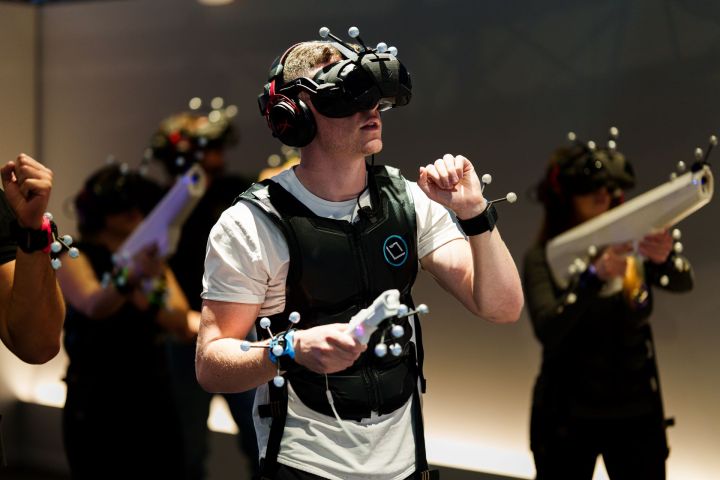 A group playing at Sandbox VR.Image: Multiplayer VR gaming at Sandbox VR. (Sandbox VR)
A group playing at Sandbox VR.Image: Multiplayer VR gaming at Sandbox VR. (Sandbox VR)
Several features make the Vive Focus Vision well-suited for multi-user environments. Automatic IPD adjustment ensures optimal sharpness for each user. A 20-minute backup battery enables hot-swapping of the main battery, minimizing downtime. Removable and cleanable front and rear pads maintain hygiene.
The Vive Focus series is popular in location-based entertainment venues like Sandbox VR and The Void, where groups engage in multiplayer VR experiences. The Vive Focus Vision serves as an excellent upgrade for the Focus 3 in these settings.
Is the HTC Vive Focus Vision Right for You?
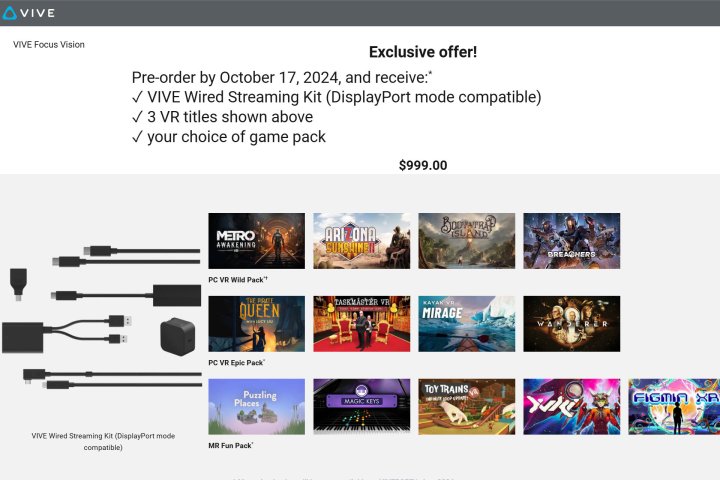 HTC Vive Focus Vision preorder promotion.Image: HTC’s preorder promotion for the Vive Focus Vision. (HTC)
HTC Vive Focus Vision preorder promotion.Image: HTC’s preorder promotion for the Vive Focus Vision. (HTC)
Priced at $999, the Vive Focus Vision is more expensive than the $899 Vive XR Elite (although the XR Elite’s eye-tracking accessory adds $199). For VRChat enthusiasts and those prioritizing eye-tracking and SteamVR use, the Vive Focus Vision is a compelling choice.
For standalone VR, the Vive XR Elite’s lighter, more compact design might be preferable. While its pancake lenses offer better clarity, its resolution and passthrough are inferior. The choice between the two depends on individual preferences.
Compared to the Vive Focus 3, the Vision is a significant upgrade. It’s also an ideal choice for Vive Pro 2 owners, adding eye-tracking, hand-tracking, inside-out tracking, hot-swappable batteries, and color passthrough.
For standalone VR on a budget, the Meta Quest 3 and Quest 3S offer strong value. PC gamers prioritizing high-end experiences might explore other premium VR headsets designed for Windows.
HTC offered a preorder promotion including a Vive Wired Streaming Kit and bonus game packs. The Vive Focus Vision is available in consumer ($999) and business ($1,299) editions.



